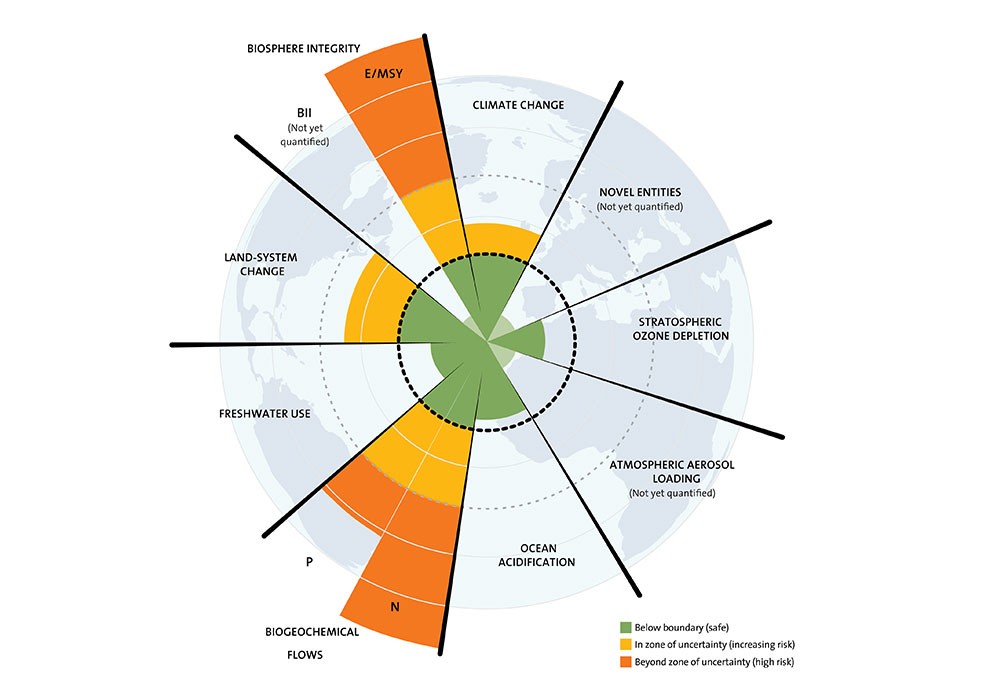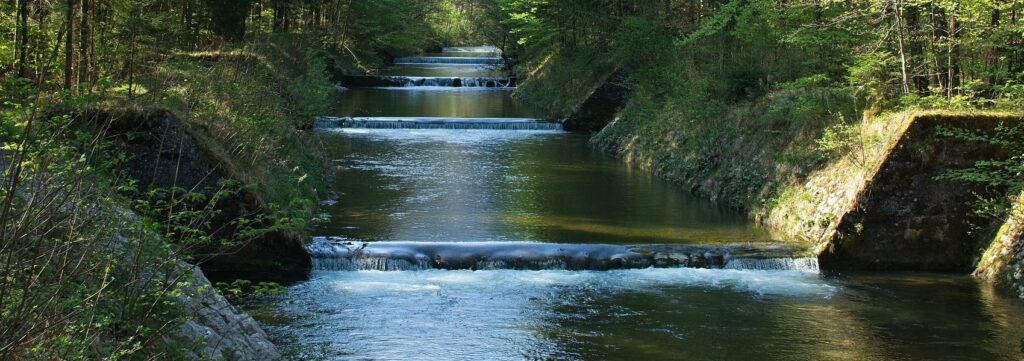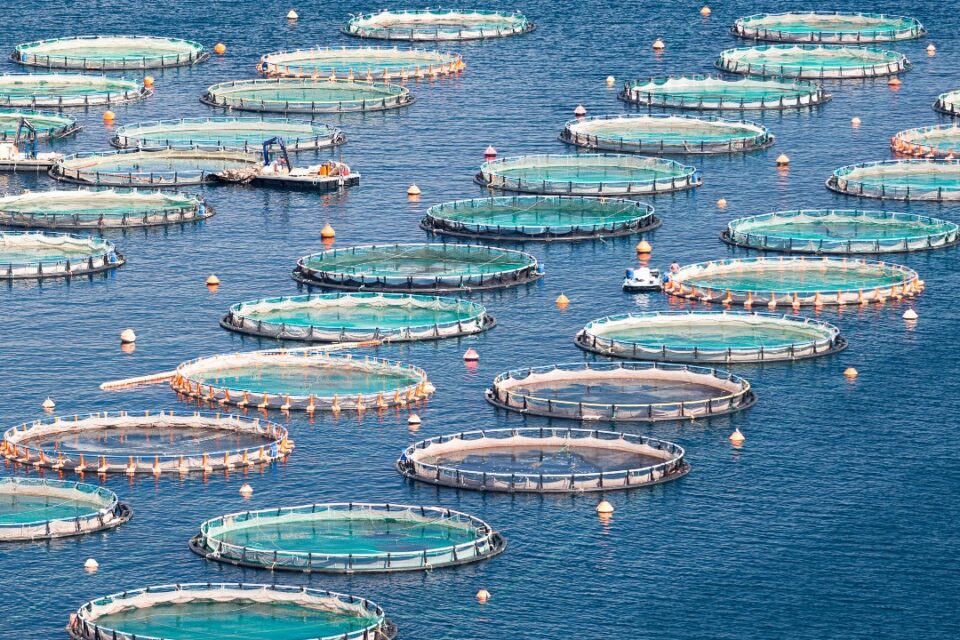We have left the Holocene and entered the Anthropocene. Or so they say. Jacob Bronowski—in the superb “the ascent of man” from the early 1970s—might have been quite correct when he stated that “man has become the architect of his environment, but he does not command forces as powerful as those of nature”. Worryingly, in the fifty years that followed, mankind has chosen to mess around with these very powerful natural forces.
“Breaking Boundaries” is a documentary made by Johan Rockstrom et al. It presents 9 systems that maintain the stability of planet earth. Each system is characterized by a planetary boundary—a ‘tipping point’. Once that boundary is crossed, the risk of non-linear and unpredictable change—that can destabilize the planet—rises exponentially. Change may be irreversible. According to Rockstrom, we have now crossed 4 of the 9 boundaries; others are still safe, while for some we do not know the location of the tipping-point.

With every planetary boundary that is crossed, the planet loses more of its resilience and the more we enter uncharted territory. Human pressure at an unprecedented scale now risks to destabilize the very system we depend on for our livelihood and survival.
The insights presented in “Breaking Boundaries” are disturbing—to say the least. A minor positive aspect is that it also offers a glimpse of a future we need to prepare for. So, what does it mean for a water resources planner?
Climate Change
As presented in “Breaking Boundaries”, the global climate has been exceptionally stable for the last 20,000 years—the Holocene. It created predictable seasons and (fairly) reliable weather on which we based our agricultural systems. Those days are probably over.
The overall predictability of weather and climate will decrease, making the day-to-day and medium-term planning of farm operations more difficult
The safe boundary for C02 in the atmosphere is 350 ppm. We are now at 415 and still on an upward trajectory. It will further accelerate global warming and probably lead to a more unstable climate, characterized by more extreme events such as heatwaves, droughts, floods, forest fires, etc.
As a water resources planner, I presume, there is not too much we can do to bring down greenhouse gas emissions. Introducing (small-scale) hydropower or combining hydro with solar—in which a reservoir serves as a virtual battery—are sustainable means to produce green energy. But we should be careful and not compromise environmental integrity in our efforts to curb C02 emissions. After all, we crossed the planetary boundary for biosphere integrity a long time ago and are already in the high-risk zone.
Hence, for water planners, our efforts are best focused on climate adaptation. Strategies will differ per location and sector, but there are a number of general themes.
First of all, climate adaptation is all about capturing and storing rainfall, increasing its productive use, and slowing down the flow of water through the landscape. This will require a combination of nature-based solutions and water storage infrastructure—at all scales, ranging from micro to large(r). A distributed system of small-scale reservoirs is preferred to a few large(r) reservoirs because this setup is more versatile and resilient and offers more opportunities to create beneficial assemblies.

Safe use of the productive and popular floodplain is best based on the premise that flood events will be larger than predicted, and that the floodplain will be flooded on occasion. It means that we should protect critical and valuable areas—such as cities—but accept periodic inundation of the much larger agricultural zone. The “Room for the River Approach” implemented in The Netherlands is a good example.
Optimizing the use of water resources in an unstable climate is probably the wrong strategy. Rather, the focus must be on avoiding catastrophe such as generalized crop loss, dying livestock, or a river running dry during a drought. It means that redundancies are valuable, and water that is not used in a ‘wet’ year is not considered a waste.
Of course, there are quite a few other climate adaptation strategies. It is mostly common sense and build on the three themes discussed above. Will be continued in a future post.
Land System Change
Water management and land management are intimately connected. Unfortunately, water managers have little influence over how land is used and managed. We can ‘raise awareness’. Or include recommendations for water and soil conservation and environmental protection in catchment management plans. But…. how to concretize these recommendations?
In my view, “permits” are an unused tool. Water agencies issue permits for water abstraction. But they rarely attach conditions regarding responsible land management. I think this is a missed opportunity. Many permits are for large landholdings used for commercial agriculture. Conditions could focus on water harvesting and groundwater recharge, appropriate agricultural practices and erosion control, avoidance of monocultures (to enhance biodiversity), establishment of micro-climates, reducing (excessive) fertilizer use, etc.
Permits could also serve to arrest the degradation of the extensive dryland areas that are used for communal grazing. These fragile ecosystems are subject to the ‘tragedy of the commons’. Over-grazing in periodic drought years may be avoided by limiting and carefully positioning watering points—such as valley tanks, deep boreholes, or small reservoirs. After all, grazing stops when watering points dry up. Dryland restoration increases ground cover and soil organic matter, and thus takes CO2 out of circulation. Sustainable management of dryland areas, therefore, directly contributes to climate change mitigation. The impact of dryland restoration at landscape scale may be considerable.
Biosphere Integrity
The planetary boundary for biosphere integrity was crossed many years ago and biodiversity is in rapid decline across the globe. Therefore, the critical importance of maintaining riparian ecosystems—which are rich in biodiversity—is reaffirmed. For myself, this was perhaps the biggest take away from “Breaking Boundaries”. While I knew this, of course, I did not really act on it, and did not always prioritize water for the environment in my various water projects. No more.
Many countries have mandated the preparation of environmental flow assessments. Nevertheless, in many cases water abstractions in drought years continue to prioritize, in practice, irrigated agriculture or hydropower production. ‘Breaking Boundaries’ confirms this is a mistake. The environment should always prevail when the choice is between environmental integrity or a little more agricultural output or hydropower production.
By the way, this tradeoff can be largely avoided by not optimizing the use of water resources.
Biogeochemical Flow
Excessive use of fertilizer has caused eutrophication of many lakes and coastal water bodies. Water planners can do little to limit the use of nitrogen and phosphorus in rainfed agriculture. For irrigated agriculture, however, the permit tool can be employed. Authorized water abstractions can be reduced or terminated when N and P concentrations exceed certain limits in drainage water or return flows.
Closing Comments
“Breaking Boundaries” presents a disturbing picture. Nevertheless, there remain quite a few tools in the toolbox of a water resources planner to adapt to these new realities. Making better use of rainfall and slowing down the flow of water through the landscape are effective adaptation mechanisms. Perhaps the most counter-intuitive strategy is to not optimize the use of water resources. After all, the little extra gains from the optimized water resource are just not worth it. They are a just fraction of the impacts of other potential measures, such as for example reducing food waste.
Cut personal CO2 emissions in half per decade (Johan Rockstrom)
